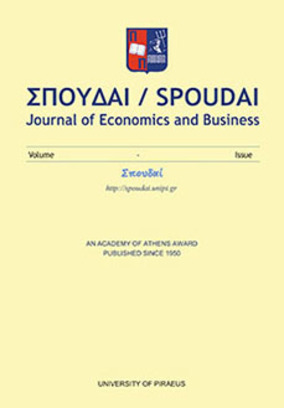Shipping crises in the media
Part of : Σπουδαί : journal of economics and business ; Vol.63, No.3-4, 2013, pages 137-145
Issue:
Pages:
137-145
Abstract:
The purpose of this study is to examine the general media’s portrayal of important maritime accidents which in the maritime media receive widespread publicity and are likely to have an impact on the shipping community’s social image. To this purpose, news framing theories were researched and used in a content analysis of print media articles on six important maritime accidents and incidents during the period 2008 to 2012. The study examines related articles published in the UK newspapers with the largest circulation to review how the general media portrayed important accidents and incidents within the shipping world and community and to analyze how the Media had reported the six events that were finally chosen. The content analysis focused on the crisis classification of the disaster, the importance and length of coverage and the attitude of the media towards the specific companies, as well as the shipping industry as a whole.
Subject (LC):
Keywords:
shipping, media, crises, image
Notes:
Περιέχει πίνακα και βιβλιογραφία, Special Issue: Management of maritime safety, security and environmental protection
References (1):
- Angelique, H. and Cunningham, K., 2006. Media framing of dissent: The case of initial anti-nuclearprotests following the Three Mile Island accident. The Australian Community Psychologist,18(2), 42-57.Ashley, L. and Olson, B., 1998. Constructing Reality: Print Media's Framing of the Women's Movement,1966 to 1986. Journalism & Mass Communication Quarterly, June 1998 (75), 263-277.Botan, C. H. and Taylor, M., 2004. Public relations: The state of the field. Journal of Communication,54(4), 645-661.Coombs, T. and Holladay, S., 2002. Helping crisis managers protect reputational assets. ManagementCommunication Quarterly, 16(2), 165-186.Crabble, R. E. and Vibbert, S. L., 1985. Managing issues and influencing public policy. Public RelationsReview, 11, 3-16.Culley, M. R, Ogley- Oliver, E. and Carton, A., 2010. Media Framing of Proposed Nuclear Reactors.Journal of Community & Applied Social Psychology, 20, 497-512.Dewey, J., 1927. The Public and its Problems. New York: Holt.Driedger, M., Jardine, C., Boyd, A. S. and Mistry, B., 2009. Do the first 10 days equal a year? Comparingtwo Canadian public health risk events using the national media. Health, Risk & Society,11(1), 39-53.Entman, R. M., 1993. Framing: Toward Clarification of a Fractured Paradigm. Journal of Communication,43, 51-58.Gitlin, T., 1980. The Whole World Is Watching: Mass Media in the Making and Unmaking of theNew Left. Berkeley, CA, Los Angeles, CA & London, U.K.: University of California Press.Grunig, J. E., 1992. Excellence in public relations and communication management. Hillsdale, NJ:Lawrence Erlbaum Associates.Hsieh, H. F. and Shannon, S. E., 2005. Three approaches to qualitative content analysis. Qualitativehealth research, 15(9), 1277-1288.Macnamara, J., 2005. Media content analysis: Its uses, benefits and Best Practice Methodology.Asia Pacific Public Relations Journal, 6(1), 1-34.Miles, M. and Huberman, M., 1994. Qualitative data analysis. California, USA: Sage.Neuendorf, K., 2002. The Content Analysis Guidebook. Thousand Oaks, CA: SagePublications.Newbold, C., Boyd-Barrett, O. and Van den Bulck, H., 2002. The media book. London, UK: EdwardArnold Publications. Reason, M. and Garcia B., 2007. Approaches to the newspaper archive: content analysis and presscoverage of Glasgow’s Year of Culture Media. Culture & Society, 29(2), 304-331.Reuters Migrant boat sinks off Turkey, children among 61 dead, Sep 6, 2012, available at:http://www.reuters.com/article/2012/09/06/us-turkey-boat-idUSBRE8850GQ20120906Romenti, S. and Valentini, C., 2010. “Alitalia's crisis in the media - a situational analysis”. CorporateCommunications: An International Journal, 15(4), 380-396.Slater, M. D. and Rasinski, K. A., 2005. Media Exposure and Attention as Mediating Variables InfluencingSocial Risk Judgments. Journal of Communication, 55, 810-827.Theotokas, I. and Bissias, I., 2014. A touch of salt: the image of shipping in newspapers. WMUJournal of Maritime Affaires (accepted for publication).Wertz, E. and Kim, S., 2010. Cultural issues in crisis communication: A comparative study of messageschosen by South Korean and US print media. Journal of Communication Management:An International journal, 14(1), 81-95.




